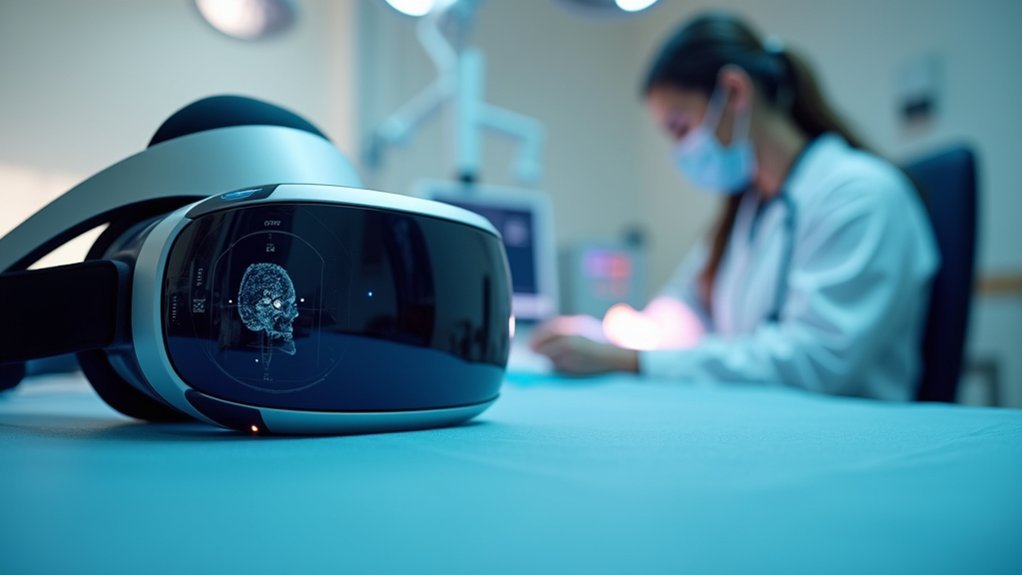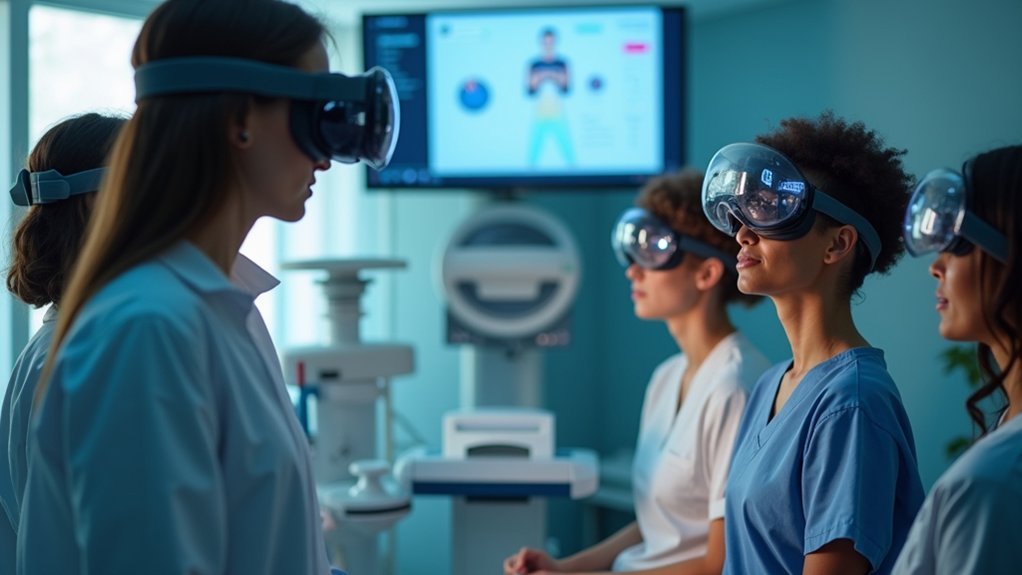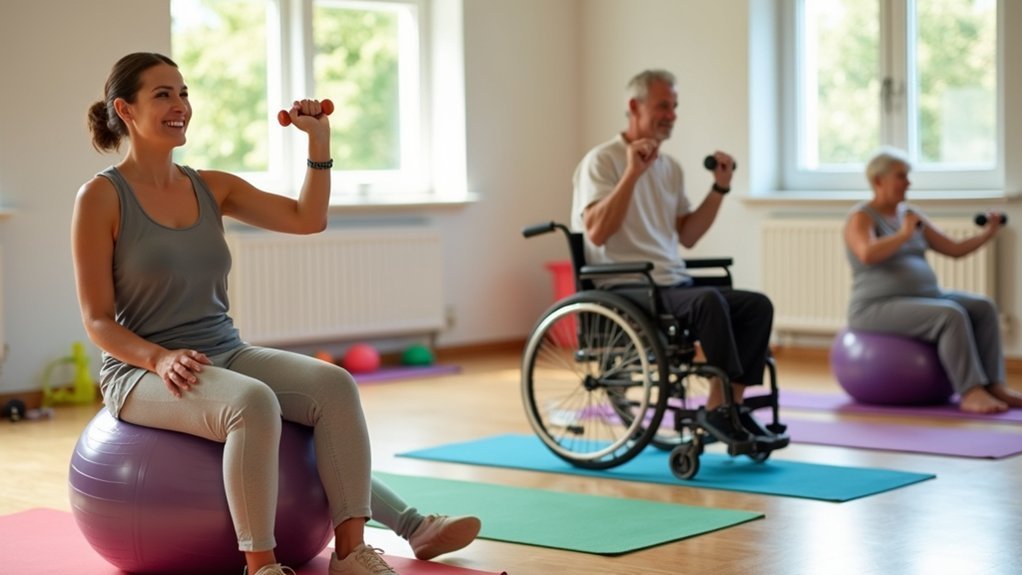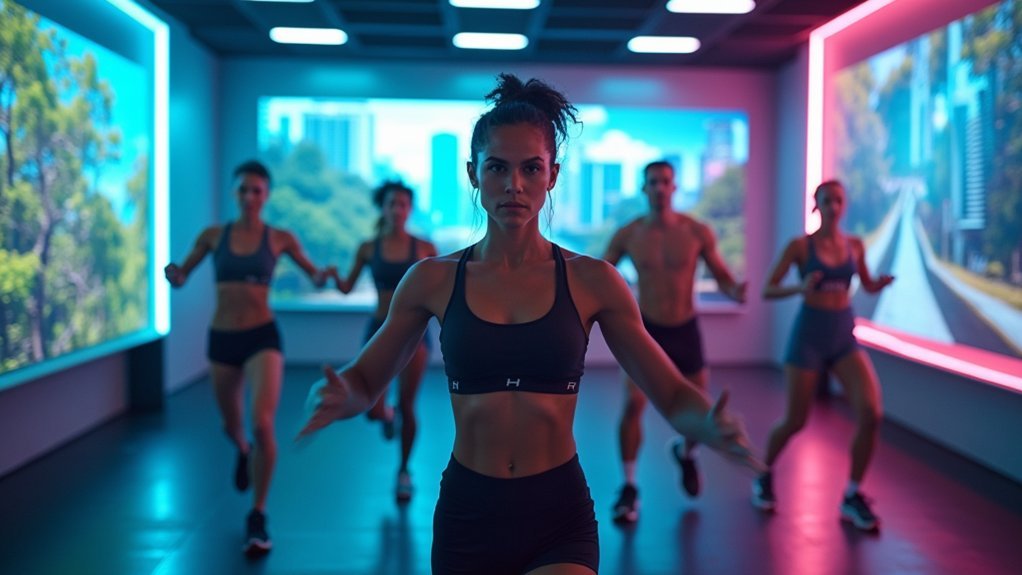You can optimize VR FOV in medical applications through three key strategies: implement dynamic FOV adjustments that narrow the field of view during movement sequences using soft-edged cutouts, apply subtle visual modifications like peripheral dimming and adaptive brightness control to reduce eye strain, and conduct systematic user studies with diverse participants to gather detailed comfort feedback. These evidence-based approaches will considerably reduce motion sickness while maintaining immersion, and there’s much more you’ll discover about personalizing these techniques.
Dynamic FOV Adjustments Based on User Motion and Comfort Levels

When you’re experiencing VR motion sickness during medical simulations, dynamic FOV adjustments can dramatically reduce your discomfort by narrowing the FOV during virtual movement sequences.
Dynamic FOV adjustments during VR medical training can dramatically reduce motion sickness by narrowing your field of view during movement.
This immersive technology uses soft-edged cutouts that you won’t consciously notice, creating better alignment between your vestibular cues and visual input. Studies show you’ll maintain higher comfort levels and longer engagement in virtual environments when these adjustments respond to your head movements.
The technique preserves your user experience while minimizing VR sickness, making it invaluable for medical training scenarios.
Future developments will adapt dynamic FOV adjustments based on your physiological indicators like heart rate, creating personalized comfort optimization. Researchers are also exploring different cutout shapes and textures to further enhance your immersion during complex medical procedures.
Implementing Subtle Visual Modifications to Minimize Medical VR Discomfort
Beyond motion-responsive adjustments, you can implement several subtle visual modifications that work behind the scenes to reduce VR discomfort during medical training and patient care applications. Soft-edged cutouts that gradually obscure peripheral vision create dynamic field of view adjustments without jarring changes. These modifications notably reduce VR sickness while maintaining immersion in virtual environments.
| Modification Type | Comfort Impact |
|---|---|
| Soft-edged FOV restrictors | Enhanced comfort during extended sessions |
| Gradual visual changes | Reduced motion sensitivity |
| Peripheral dimming | Minimized optical flow disruption |
| Adaptive brightness control | Decreased eye strain |
You can fine-tune these visual modifications based on user responses and physiological indicators like heart rate. This personalized approach optimizes comfort levels for specific medical applications, allowing professionals and patients to engage longer in virtual environments without compromising their experience.
Conducting User Studies to Guide FOV Improvements in Clinical Settings

Since medical VR applications demand precise comfort enhancement, you’ll need systematic user studies in clinical settings to identify how FOV adjustments affect both healthcare professionals and patients.
You should recruit diverse participants to test various FOV configurations during immersive medical simulations, collecting detailed feedback about comfort levels and VR sickness symptoms. Focus on measuring how dynamic FOV adjustments correlate with motion sickness reduction during extended training sessions.
You’ll want to document which specific FOV limitations trigger discomfort in different medical scenarios. This user feedback becomes invaluable for developing adaptive enhancements that automatically adjust FOV based on perceived motion.
Through iterative clinical trials, you can refine your VR applications to achieve ideal comfort without sacrificing educational or therapeutic effectiveness, ensuring your medical VR solutions remain both immersive and accessible.
Frequently Asked Questions
What Is a Good Fov for VR?
You’ll want a field of view between 100-120 degrees for ideal VR experiences. This range closely matches your natural peripheral vision, reducing tunnel vision effects while maintaining comfortable visuals and spatial awareness during immersive sessions.
How Is VR Being Used in Medicine?
You’ll find VR revolutionizing medical training through surgical simulations, patient preparation for procedures, pain management during treatments, physical therapy rehabilitation programs, and enhanced medical education by making complex concepts more understandable and interactive.
What Is the Best VR for Healthcare?
You’ll find the Oculus Quest 2 and HTC Vive Pro are top choices for medical applications. They offer high-resolution displays, wide fields of view, and low latency that’s essential for effective medical training simulations.
Which Technology Enables Real-Time Rendering and Simulation of Medical Devices?
You’ll find that advanced graphics processing units (GPUs) enable real-time rendering and simulation of medical devices. They’re essential for high-speed calculations and visualizations in virtual and augmented reality healthcare environments.





Leave a Reply